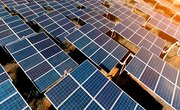
Discussions of the advantages and disadvantages of human power and energy often revolve mainly around concerns about pollution, worker safety, energy efficiency, the extent of the worldwide supply. Most of the power required to sustain the pace of modern global life is derived from sources that yield unwanted waste products or otherwise create undesirable situations.
More than anything else, the long- and short-term environmental impacts have come to revolve around anthropogenic (human-caused) climate change, apart from pollution in the traditional sense (e.g., visible smoke from coal-powered electricity plants, or wastewater from various industrial activities).
This is because the combustion of fossil fuels results in addition of CO2 (carbon dioxide) and other "greenhouse gases" into Earth's atmosphere, resulting in added trapping of heat near the planet's surface.
Energy and Work
Human power pros and cons center on factors other than pollution. The amount of useful work that can be done using a given process in relation to energy input, called the mechanical efficiency (energy output divided by energy input, expressed as a percentage), also matters.
Demerits of human power are often simply that humans by themselves can do work much less efficiently and for a much shorter period of time than machine-enhanced work can be done.
Energy in physics has units of distance multiplied force (the product of mass and rate of change in velocity or acceleration). This unit is the newton-meter, which is normally used for work, and also called joule.
This unit is produced using other combinations of units; for example, linear kinetic energy (KE) is obtained from the formula (1/2)mv2,, while potential energy is in the form mgh, where m= mass, g = the acceleration due to gravity (9.8 m/s2 on Earth) and h = height above the ground or some other zero-reference point).
Human Power Examples
Power in physics is simply energy per unit time, or the rate of work in a system in which energy is put to mechanical use. Simple human power examples include running up a hill or lifting weights; the more energy per unit time, the more power output it present.
If you climb a given flight of stairs in 10 seconds, your potential energy changes by the same amount as if you climb the stairs in 5 second or 15 second. But your power is dependent on how little time it takes you to reach the top, and in each case you've done the same amount of physical work.
Types of Energy
Kinetic and potential energy make up an object's mechanical energy. Objects also have what is called internal energy, which relates mainly to the rapid vibrational motion of matter's tiny constituent particles at the molecular level.
Energy comes is a number of other forms as well: chemical energy (stored in the bonds of molecules), electrical energy (resulting from the separation of charges and an electric field) and heat, which is difficult in most systems to use for work and instead mostly "dissipates."
Deriving power from energy means burning fuel (oil natural gas, coal; some biofuels), using the kinetic energy of flowing water or wind (hydro or wind power) or "splitting" atoms (nuclear power).
Mechanical Energy Storage
While Earth has lots of available fuel to produce energy (mostly electricity), storing power is a significant challenge. Batteries currently cannot provide even a small fraction of the power needed to keep worldwide manufacturing, communications networks, and global transportation going for very long.
In some areas that have favorable geography, it is possible to keep a reservoir of water higher than a power plant and use the gravitational potential energy in this reservoir to generate hydro power in the short term by allowing it to flow from higher to lower areas and power the turbines of electricity generators in the process. As you might imagine, though, this stopgap measure would not work for very long in a highly populated area.
The Future of Energy Storage
One criticism leveled at renewables, in particular solar and wind power, is their unreliability owing to their come-and-go nature; calm days or periods happen, as do cloudy days.
Thanks to the international imperative to continue producing energy while trying to reduce harm to the environment, a group of researchers at the Massachusetts Institute of Technology near Boston, Massachusetts, started work 2018 aimed at storing effective amounts of solar power.
The group proposed using tanks of molten silicon to store this kind of energy and release it on demand, and predicted that eventually, their conceptual design could produce a product vastly superior to today's industry standard, lithium-ion batteries.
References
About the Author
Kevin Beck holds a bachelor's degree in physics with minors in math and chemistry from the University of Vermont. Formerly with ScienceBlogs.com and the editor of "Run Strong," he has written for Runner's World, Men's Fitness, Competitor, and a variety of other publications. More about Kevin and links to his professional work can be found at www.kemibe.com.
Photo Credits
Jupiterimages/Photos.com/Getty Images
